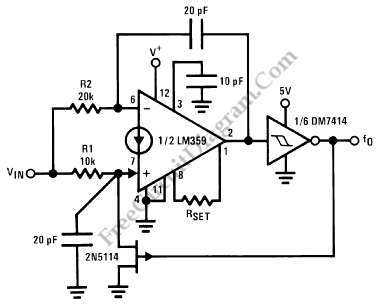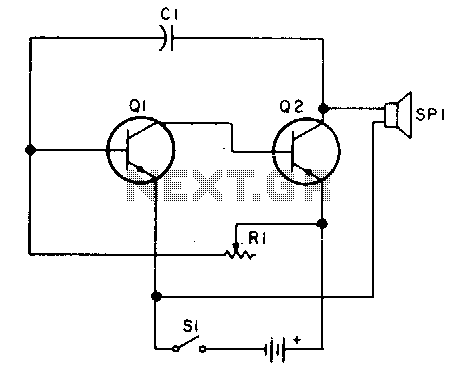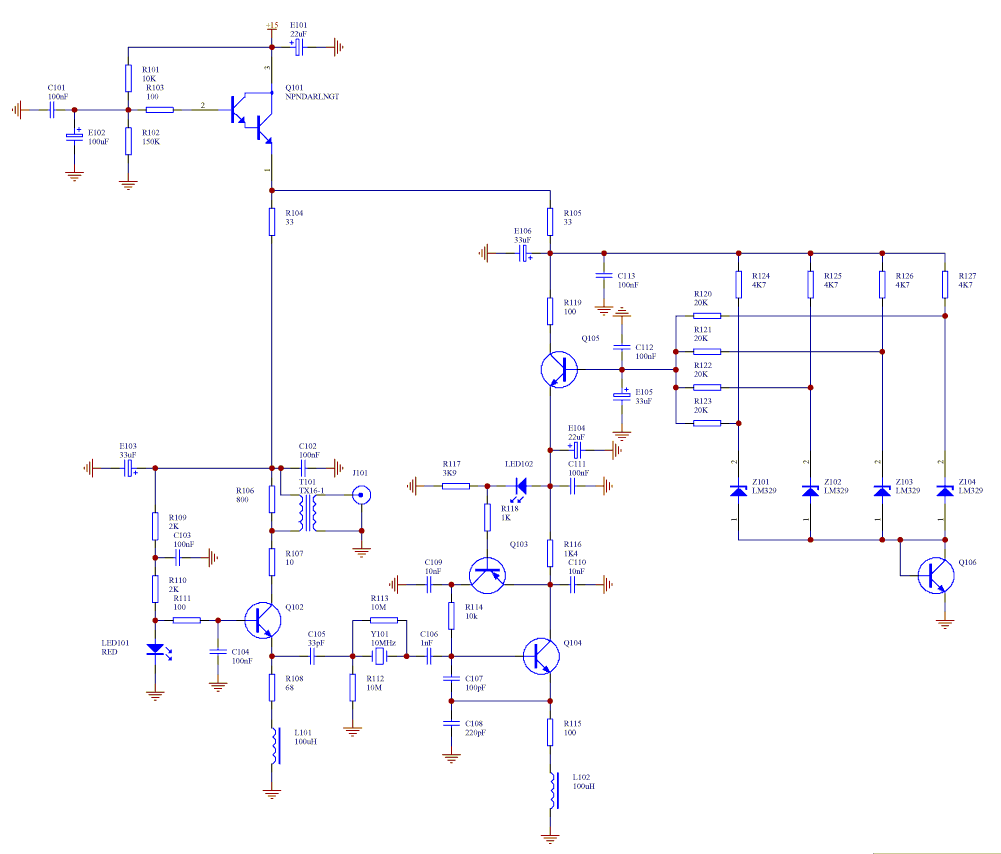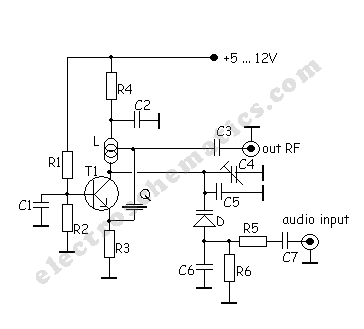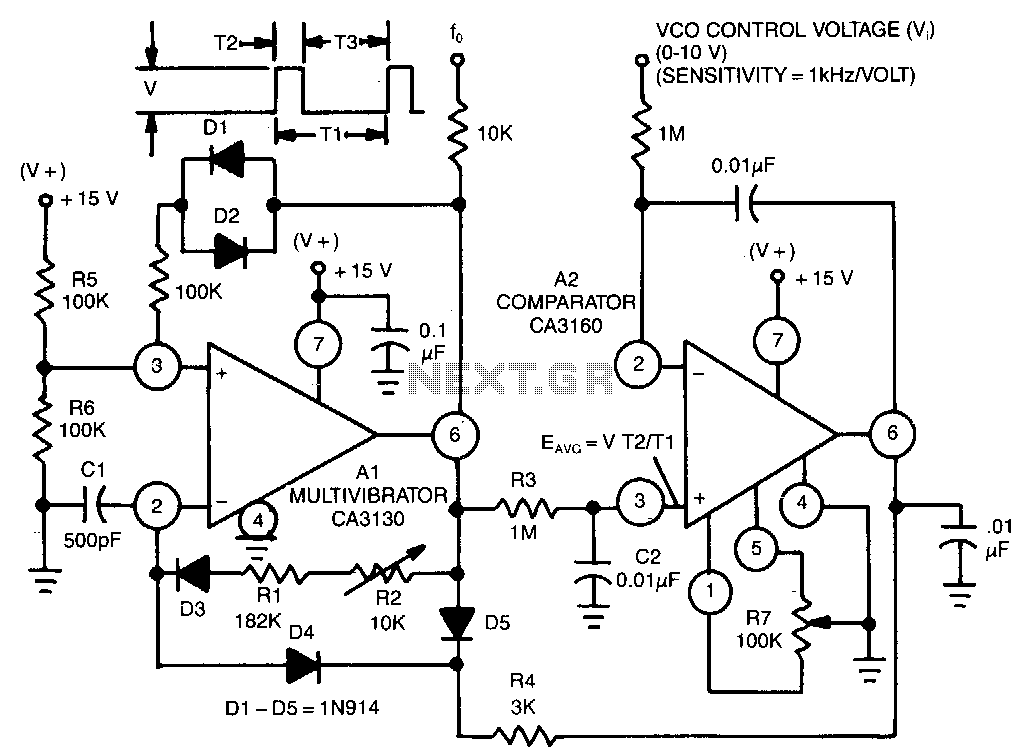
Feedback oscillator
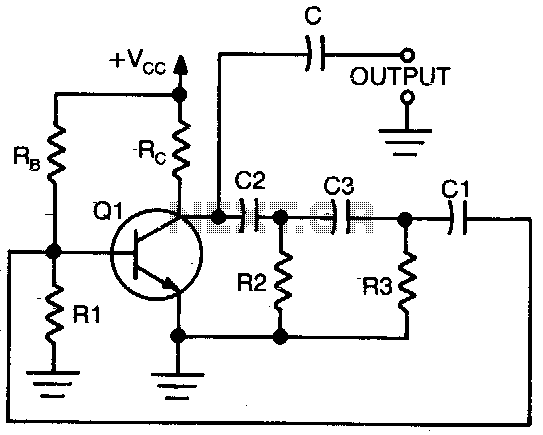
The circuit oscillates because the transistor shifts the phase of the signal 180 degrees from the base to the collector. Each of the RC networks in the circuit is designed to shift the phase 60 degrees at the frequency of oscillation, resulting in a total phase shift of 180 degrees. The appropriate values of R and C for each network are determined using the equation f = 1/(2πRC); this equation facilitates the 60-degree phase shift required by the design.
The described circuit functions as an oscillator, utilizing a transistor to achieve phase shifting necessary for sustained oscillation. The transistor operates in a feedback configuration, where the output at the collector is fed back to the base, creating a condition for continuous oscillation. The 180-degree phase shift provided by the transistor is crucial as it ensures that the output signal is in opposition to the input signal, fulfilling the requirement for positive feedback.
To achieve the desired phase shift of 60 degrees for each RC network, the values of the resistors (R) and capacitors (C) must be selected carefully. The formula f = 1/(2πRC) is employed to calculate the resonant frequency (f) of the RC network. This frequency corresponds to the frequency of oscillation for the entire circuit. The choice of R and C values directly influences both the frequency and the phase shift characteristics of the oscillator.
In practical applications, the design may involve multiple RC networks, each contributing to the overall phase shift. The phase shifts must be precisely calculated to ensure that the total phase shift around the circuit sums to 360 degrees (or 0 degrees, equivalently), allowing for stable oscillations. The careful selection of component values will also affect the amplitude and stability of the oscillations, making it essential to consider the tolerances and characteristics of the components used.
Overall, the circuit's ability to oscillate is a result of the careful interplay between the transistor's phase shift and the RC networks' contributions, allowing for the generation of a periodic waveform at the desired frequency.Circuit oscillates because the transistor shifts the phase of the signal 180° from the base to the collector. Each of the RC networks in the circuit is designed to shift the phase 60° at the frequency of oscillation for a total of 180°
The appropriate values of R and C for each network is found from f = l/2Vr3TrRC); that equation allows for the 60° phase shift required by the design.
The described circuit functions as an oscillator, utilizing a transistor to achieve phase shifting necessary for sustained oscillation. The transistor operates in a feedback configuration, where the output at the collector is fed back to the base, creating a condition for continuous oscillation. The 180-degree phase shift provided by the transistor is crucial as it ensures that the output signal is in opposition to the input signal, fulfilling the requirement for positive feedback.
To achieve the desired phase shift of 60 degrees for each RC network, the values of the resistors (R) and capacitors (C) must be selected carefully. The formula f = 1/(2πRC) is employed to calculate the resonant frequency (f) of the RC network. This frequency corresponds to the frequency of oscillation for the entire circuit. The choice of R and C values directly influences both the frequency and the phase shift characteristics of the oscillator.
In practical applications, the design may involve multiple RC networks, each contributing to the overall phase shift. The phase shifts must be precisely calculated to ensure that the total phase shift around the circuit sums to 360 degrees (or 0 degrees, equivalently), allowing for stable oscillations. The careful selection of component values will also affect the amplitude and stability of the oscillations, making it essential to consider the tolerances and characteristics of the components used.
Overall, the circuit's ability to oscillate is a result of the careful interplay between the transistor's phase shift and the RC networks' contributions, allowing for the generation of a periodic waveform at the desired frequency.Circuit oscillates because the transistor shifts the phase of the signal 180° from the base to the collector. Each of the RC networks in the circuit is designed to shift the phase 60° at the frequency of oscillation for a total of 180°
The appropriate values of R and C for each network is found from f = l/2Vr3TrRC); that equation allows for the 60° phase shift required by the design.
